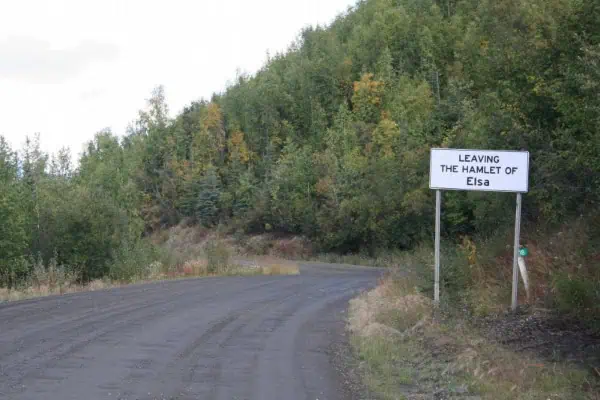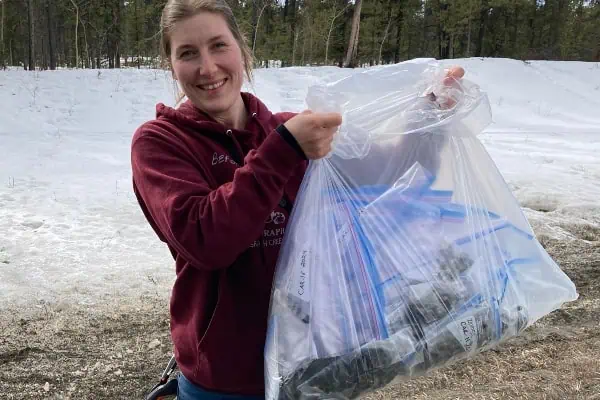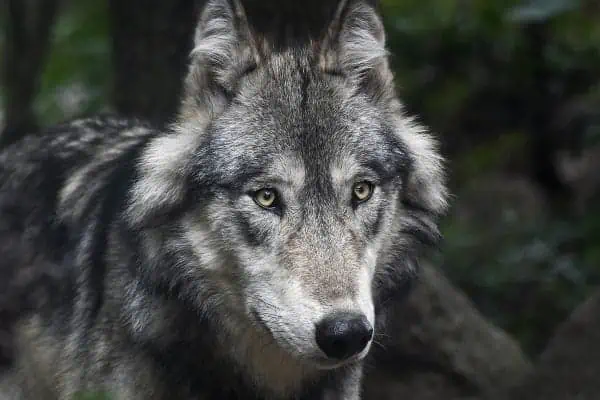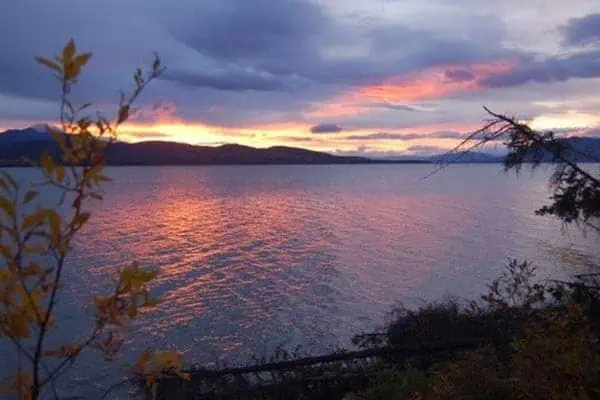If the crocus is the official flower of spring, then the swan must be the official bird of spring in the Yukon. Each year thousands of swans ascend to the Yukon from winter feeding grounds along the coasts of Washington and southern British Columbia. Their annual stop brings them to Marsh Lake, where the birds congregate en masse, like tourists on a layover, feeding and resting up for the remainder of journey.
Their appearance is a sure sign that long-awaited spring is about to unfold.
The mass migration features both trumpeter and tundra swans, although the trumpeters are much more numerous, says Scott Cameron of Environment Yukon. Both species are similar in appearance, with white plumage, black bills and eyes and large feet. Trumpeter swans are slightly larger than their tundra cousins, however, weighing in at around 25 pounds, with a wingspan of up to six feet. Males and females of both species appear the same, and juveniles are a light grey colour instead of white.
Swans are vegetarians and stop in the Southern Lakes region in the Yukon to eat aquatic plants and rest before heading off to their breeding grounds in central Alaska, although a few do breed in the northern Yukon, Cameron says. They usually begin to appear at Marsh Lake around the first week of April, although Cameron notes they arrived early in 2016. During peak migration, which occurs in the middle of April, there are often 1,300 swans gathered together, although last year the numbers were higher: around 2,000.
“As a whole, we’ve seen populations of trumpeter swans increase across North America over the last decade,” Cameron says of the increased numbers.
The arrival of the swans attracts not just people, but also predators, such as foxes, coyotes and bald eagles, Cameron says.
“Almost anything would scavenge a swan carcass. These birds are part of the food web,” he notes.
One thing Cameron likes about the swans is the way they take off from the water.
“Being such a big, lumbering heavy bird, it’s interesting to see them take off and get air born. They are not exactly graceful… it’s a running start on the water and the sound they make with their feet slapping the water, the air rushing over their feathers as they take off can be very loud. It’s a lot of bird and when you’re close to it it’s very impressive,” he says.
The Swan Haven Interpretive Centre opens with The Celebration of Swans the first week of April, and will feature free programing and events. The swan migration itself is usually finished by the end of April. For more information, you can visit Environment Yukon’s webpage at www.env.gov.yk.ca, click on the “Animals and Habitat” tab, and then under “Wildlife Viewing” click on “Swan Haven.”
How to Get to Swan Haven
Environment Yukon’s web page for Swan Haven gives these directions for getting there: It is located on the shores of M’Clintock Bay on Marsh Lake. From Whitehorse, take the Alaska Highway south past the Lewes River Bridge to Marsh Lake. About 40 km south of Whitehorse, you’ll reach North M’Clintock Subdivision, and Swan Haven Road. Turn right down Swan Haven Road and follow it for 2 km until you reach the Centre.




